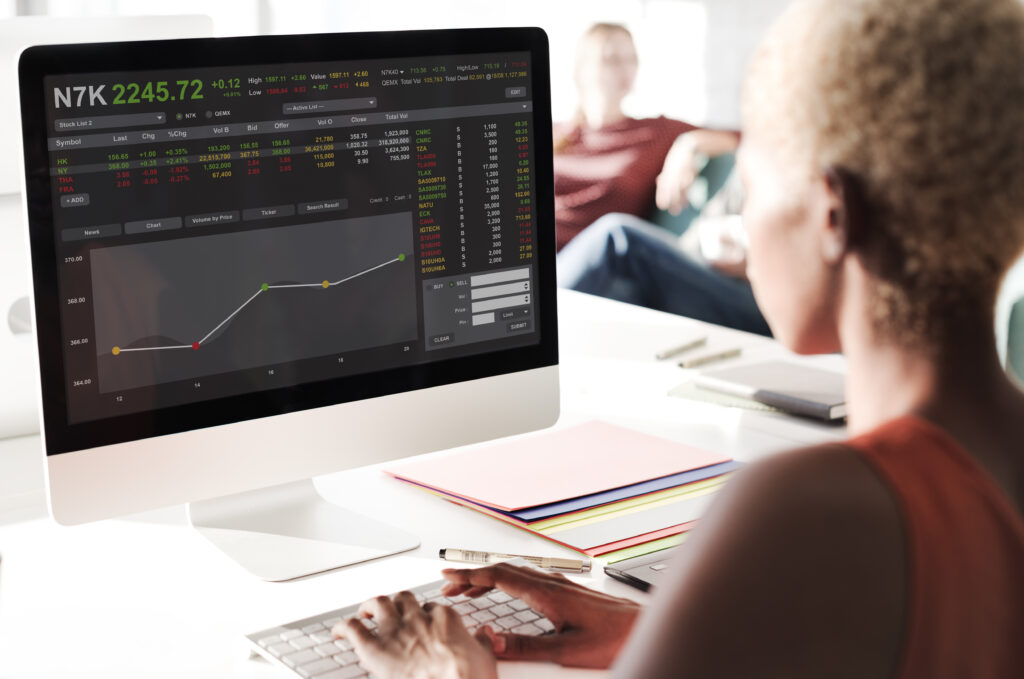On How to trade Forex for a Living.
Have you ever exchanged your currency for another when traveling to a place outside your country and have taken part in the forex market in some small way even if only for a brief time? Each day, over $7.5 trillion is exchanged as people, companies and countries trade one currency for another.
But just what the heck is forex trading, and how do you even get started as a newbie? In this guide, we’ll unpack the basics, dissect the market’s jargon, and guide your steps through towards your first foray into the forex market with confidence.
What Is Forex Trading?
At the heart forex trading is exchanging one currency for another, simultaneously buying one and selling another.
They are almost without exception traded against each other, like EUR/USD, USD/JPY, or GBP / USD.
For instance, if you think the Euro is going to rise against the U.S. Dollar, you can buy the EUR/USD currency. And if you’re right, you make money. If you are wrong, you take a loss.

Why Is Forex So Popular?
Forex trading has gained popularity among retail traders like you and me and why it is more popular than ever is explained in this article.
· It’s Open 24 Hours
The forex market is open for trades 24 hours a day, five days a week, whereas the stock market have a few trading hours only.
It tracks the sun as it travels from Sydney to Tokyo to London and finally New York.
· High Liquidity
The forex market is VERY liquid due to the enormous trading volume occurring each day! That is, trades can be made quickly and at known prices a huge benefit for traders.
· Leverage Opportunities
Leverage Forex brokers usually allow their customers to trade with only a small percentage of their account balance: basically, this implies using more money in order to have a larger exposure. For example, online forex brokers several brokers offer 200:1 leverage, which means you can control $2,000 worth of currency with $10.
WARNINGS: Gains and losses can be magnified. Client will be faced with rollover if opposing positions are not closed. Use it wisely.
· Low Barriers to Entry
There are also demo and micro accounts which let you trade with as little as $100. And there are plenty of free resources and tutorials available on the web to help you learn.
· Common Currency Pairs
Forex deals with trading in pairs. Among the most heavily traded are:
· EUR/USD – Euro / US Dollar
· USD/JPY (US Dollar / Japanese Yen)
· GBP/USD – British Pound / US Dollar
· USD/CHF – US Dollar and Swiss Franc
· AUD/USD The Australian dollar broke higher during the trading session on Wednesday, slicing through the 0.7250 level with ease.
They are the major pairs as they all include the US dollar and are the most traded, most liquid forex pairs.
Like What You’ve Read?
If you’re ready to try forex, follow this beginner-friendly plan:
Learn the Basics
Learn how forex works before risking your capital. Find out what is a currency pair, what are pips, what are spreads, what is leverage and what is risk management.
· Recommended reading includes:
· Baby Pips. com (free educational site)
· Investopedia’s Forex section
· YouTube videos of professional traders
· Select a Good Forex Broker
· Look for a broker that is:
· Regulated (for example FCA, ASIC or NFA)
· Offers a demo account
· Incur low spreads -as well as no hidden commission fees-
· Provides good educational resources and strong customer support
Practice with a Demo Account
A practice account allows you to trade in real-time conditions without the risk of losing any money. This is where you can begin to experiment with trading strategies, test the interface on the platform, and get more comfortable as a trader.
Fund Your Account and Start Small
Begin with a little only as much as you’re willing to lose and before long you’ll have a little more experience under your belt, and can increase your risk threshold.
Popular Trading Strategies
Below are a few beginner-friendly approaches to consider:
· Scalping: Taking short-term positions in an attempt to make fast profits.
· Swing Trading: Positions held for several days to catch the market “swing”.
· Position Trading: Strategy taking a long-term approach and based on macroeconomic elements.
Pick one that makes sense to you based on your life style, risk tolerance, and personality.
Forex Trading Risks (And How to Manage Them)
But savvy traders employ a number of strategies to control it:
Use Stop-Loss Orders:
These close out your trade automatically if the market goes against you past a certain level.
Conclusion: Is Forex for You?
Forex trading is exciting and challenging, and while it can also be overwhelming and frustrating sometimes, for a lot of traders is it the best approach to the market. But it’s not a quick path to wealth. You need to be educated, patient, disciplined and practiced in order to succeed.
If you are a person that likes to learn, then forex could be a good fit for you to trade.
Think small at first, be consistent and approach trading like a business and eventually you may develop an asset that you can use for a lifetime.
